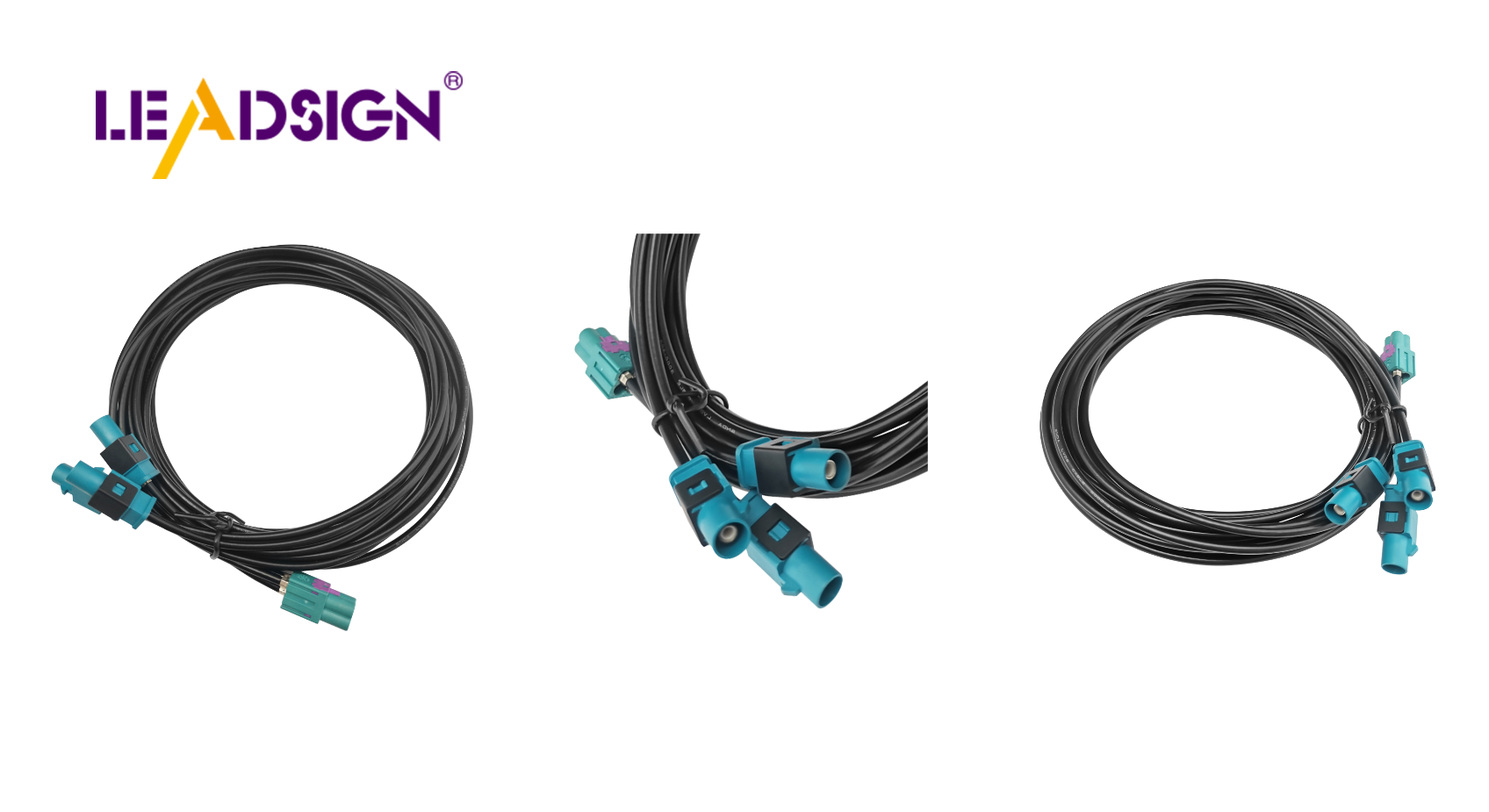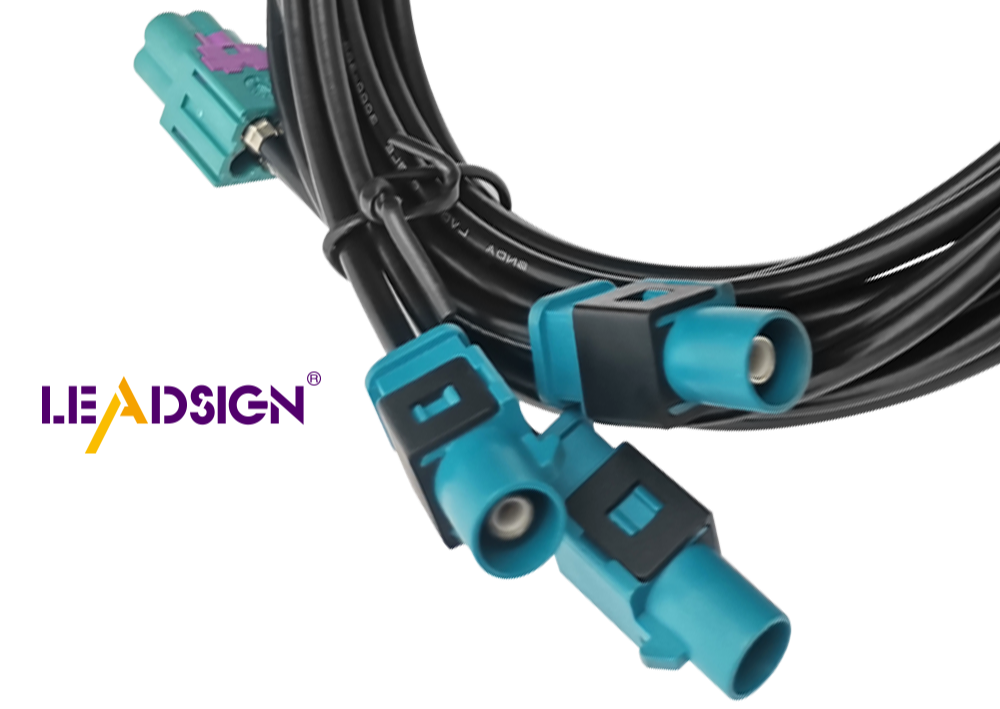How to Identify Automotive Wiring Connector Types Easily

Understanding automotive electrical connectors types is crucial for automotive work. Vehicles typically contain around 274 connectors, with nearly 100 different types. Identifying the correct one can be challenging due to the variety of shapes, sizes, and colors. This guide assists in easily identifying them, simplifying the recognition of connector types. By mastering this knowledge, you can repair vehicles more efficiently and swiftly.
Understanding Automotive Electrical Connectors Types

When fixing cars, knowing about electrical connectors is important. These connectors help the car's electric parts work right and safely. Let's look at the basic parts and common types of these connectors.
Basic Parts of Wiring Connectors
Wiring connectors have some main parts you should know:
Pins and Terminals
Pins and terminals are the main parts of a connector. They let electricity pass through. These are often made from materials like copper or brass. The number of pins can be different, which helps tell what kind of connector it is. For example, DB9 connectors have nine pins and are used in serial communication.
Housing and Locking Parts
The housing keeps pins safe from things like dust and water. It also gives support to the structure. Locking parts keep connectors attached so they don't come apart by accident. You might see different locking styles, like clips or screws, depending on the connector.
Common Car Electrical Connectors Types
Knowing different types of connectors helps you find them easily. Here are some common types of connectors:
Blade Connectors
Blade connectors are flat rectangles that fit into slots. They are used in cars because they are simple and reliable. You might see them where quick disconnection is needed, like in fuse boxes.
Bullet Connectors
Bullet connectors look like cylinders and connect by fitting one end into another. They are popular in car wiring because they connect easily and stay secure even if there's vibration.
Butt Connectors
Butt connectors join two wires end-to-end when extending or fixing a wire. They crimp onto wires for a strong connection with insulation. They're useful when space is tight during car repairs.
By learning about these parts and types, you can find and use automotive electrical connectors more easily. This knowledge makes repairs simpler and helps solve electrical problems better.
Ways to Spot Connector Types
Finding out what kind of automotive electrical connectors you have can be tricky. But with the right steps, it gets easier. Here are some simple ways to help you figure them out.
Looking Closely
Looking at the connectors is a simple and good way to know their type. By checking certain features, you can quickly tell what connector it is.
Shape and Size
First, look at the shape and size of the connector. Different types have different shapes like rectangles, circles, or squares. Sizes can also be very different. Bigger ones might be for strong power jobs, while smaller ones are for weaker tasks. By noticing these looks, you can guess better.
Color Clues
Colors help too. Many connectors use colors to show what they do or fit with. Like a red one might mean power, and blue could mean signal. Learning these colors helps you know what a connector does fast.
Using Books and Online Help
If looking doesn't give enough clues, use books or online guides about automotive electrical connectors. These give lots of details about many types of automotive electrical connectors.
Manuals from Makers
Books from car makers are great for finding out about connectors. They often have pictures and details for each part in a car model. Checking these helps you find exact info on your connector.
Internet Help
The internet has loads of info on automotive electrical connectors types. Websites and forums about fixing cars usually have big lists with pictures and notes about each type. By checking online, you can match your connector with those listed there.
Connector Experts say ask an expert if you're unsure about a connector type. They can guide you to find the right one for fixing your car safely.
By mixing looking closely with using books and online help, you can find out what kind of automotive electrical connectors types they are easily. This makes fixing things simpler and keeps your car's electric parts safe.
Easy Tips for Finding Connectors
Finding car wiring connectors can be hard. But with some easy tips, it gets simpler. Here are ways to help you sort and find connectors well.
Sorting and Naming Connectors
Keeping connectors neat is key for finding them fast. By using a system, you can quickly grab the right one when needed.
Using Stickers and Tags
Naming connectors is simple but works well. Use stickers or tags to mark each connector with important info, like its type or where it goes in the car. This saves time and stops mistakes during fixes.
Making a Helper Chart
A helper chart is great for knowing connectors. Make a chart with pictures, names, and details of different connectors. Keep this chart nearby for quick help. It helps match connectors correctly.
Tools for Finding Connectors
Having good tools makes finding connectors easier. Here are some must-have tools.
Meters and Testers
Meters and testers are super useful for checking if connectors work right. They measure things like voltage to make sure everything's okay. These tools help find problems and check connector types.
Connector Kits
Connector kits help you know different connector types. They have sample pieces and guides too. By learning from these samples, you can spot real-life connectors fast.
Connector Experts say knowing the right car pigtail connector is key for fixing things right. With these tips, you get the right stuff for repairs.
By sorting connectors and using good tools, finding them gets easier. These tips make your work faster and safer too.
Finding car wiring connectors is easier with these tips. Practice often to get better. This will boost your skills and make you more sure of yourself. Remember, knowing the right connector is key for good repairs and safety.
Connector Experts say that using the correct connector helps fix things well and avoids big errors.
By getting good at this, you become important in car work. Keep learning and improving what you know. Your hard work on connectors will be worth it later on. automotive connectivity
See Also
Exploring the Fundamentals of HSD Connectors in Automotive Sector
Navigating Ford Fakra Connectors
The Significance of Fakra Auto Connectors in Contemporary Cars

